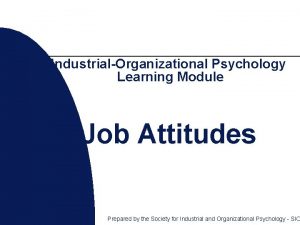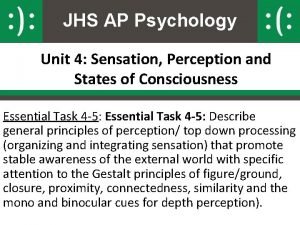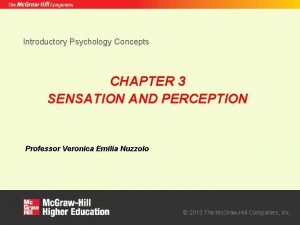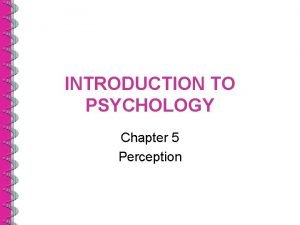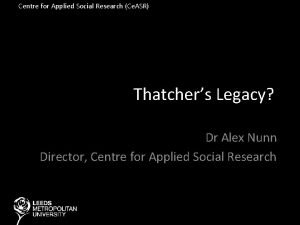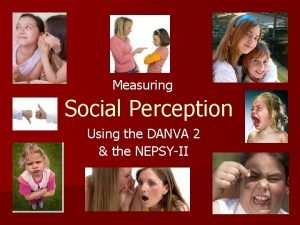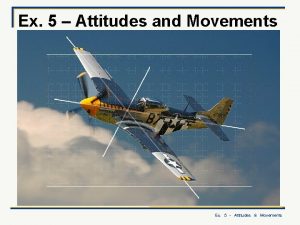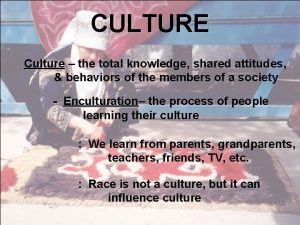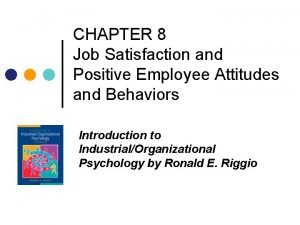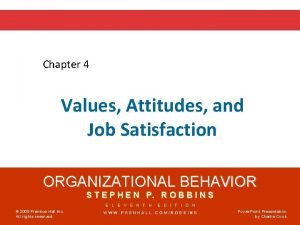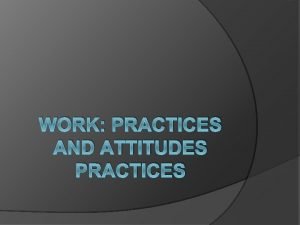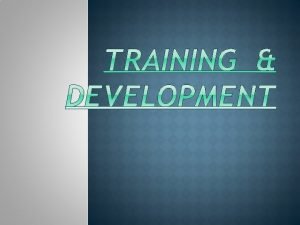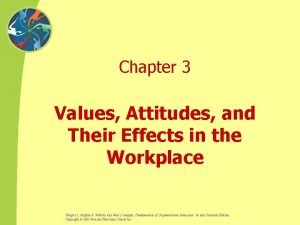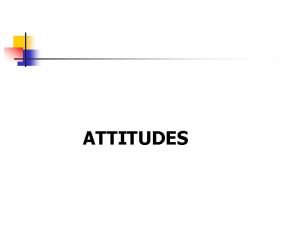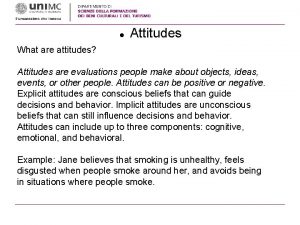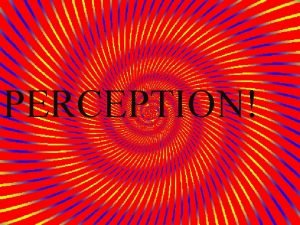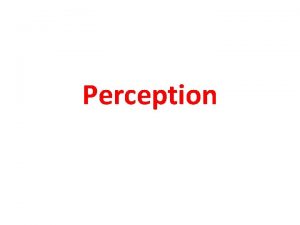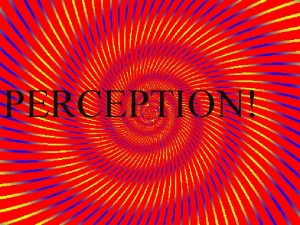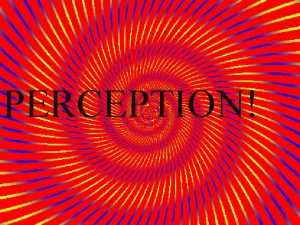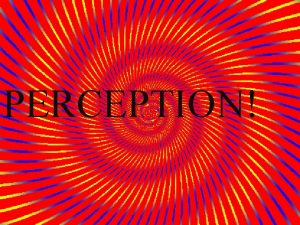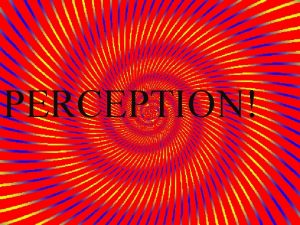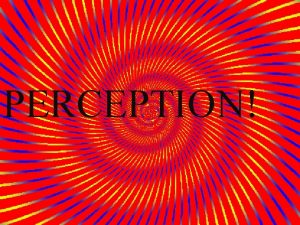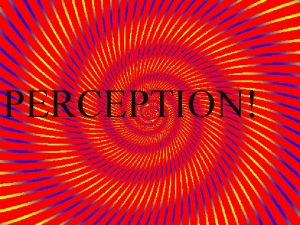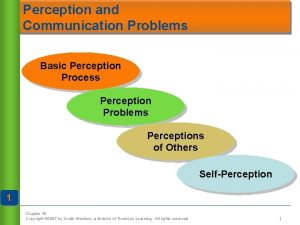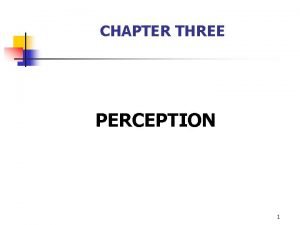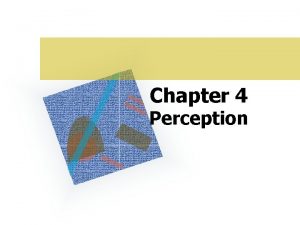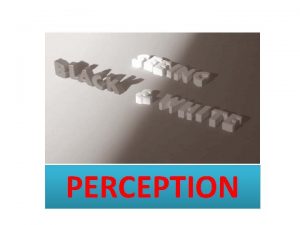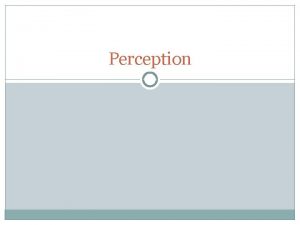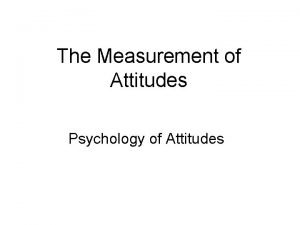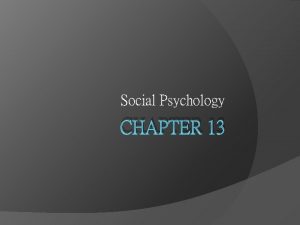SOCIAL PSYCHOLOGY social perception and attitudes Social psychology


























- Slides: 26

SOCIAL PSYCHOLOGY social perception and attitudes

Social psychology Social Thinking Attributing Behavior to Persons or to Situations Attitudes and Actions Social Influence Conformity and Obedience Social Influence Group Influence Social Relations Prejudice Aggression

Introductory remarks humans as naïve psychologists (Heider, George Kelly- personal construct theory) people' s natural tendency at assessing others' s personalities (accurate? , The Reflecting Team Approach) psychologists- biased?

attribution causation of one' s own behavior importance of situational context Attribution theory (Weiner, 1980, 1992): (1) the person must perceive or observe the behavior, (2) then the person must believe that the behavior was intentionally performed, and (3) then the person must determine if they believe the other person was forced to perform the behavior (in which case the cause is attributed to the situation) or not (in which case a, First, the cause of the success or failure may be internal or external. LOCUS OF CONTROL b, Second, the cause of the success or failure may be either stable or unstable. STABILITY c, Third, the cause of the success or failure may be either controllable or uncontrollable. CONTROLLABITY An important assumption of attribution theory is that people will interpret their environment in such a way as to maintain a positive


Self-Serving Bias. We tend to equate successes to internal and failures to external attributes (Miller & Ross, 1975). Imagine getting a promotion. This bias is true for most people, but for those who are depressed, have low self-esteem, or view themselves negatively, the bias is typically opposite.

fundamental attribution error (acter-observer bias) Lee Ross (1977), Nisbett et al. (1973) as extrapolation from a measured characteristic to an unrelated characteristic actor-in the center, environment in the background / the knowledge -the information at the disposal (friends vs. strangers) for example: person driving in a bad way (terrible driving, or a bad day? ) Subjects read pro- and anti-Fidel Castro essays. Subjects asked to rate the pro-Castro attitudes of the writers (freely or coin-toss attitude)

EXAMPLES OF ATTRIBUTIONS Students with higher ratings of self-esteem and with higher school achievement tend to attribute success to internal, stable, controllable factors such as ability, while they contribute failure to either internal, unstable, controllable factors such as effort, or external, uncontrollable factors such as task difficulty. For example, students who experience repeated failures in reading are likely to see themselves as being less competent in reading. High achievers will approach rather than avoid tasks related to succeeding because they believe success is due to high ability and effort which they are confident of. Failure is thought to be caused by bad luck or a poor exam, i. e. not their fault. Low achievers avoid success-related chores because they tend to (a) doubt their ability and/or (b) assume success is related to luck or to "who you know" or to other factors beyond their control. Thus, even when successful, it isn't as rewarding to the low achiever because he/she doesn't feel responsible, i. e. , it doesn't increase his/her pride and confidence.


Cognitive Dissonance (L. Festinger) Overview: According to cognitive dissonance theory, there is a tendency for individuals to seek consistency among their cognitions (i. e. , beliefs, opinions). When there is an inconsistency between attitudes or behaviors (dissonance), something must change to eliminate the dissonance. In the case of a discrepancy between attitudes and behavior, it is most likely that the attitude will change to accommodate the behavior. Two factors affect the strength of the dissonance: the number of dissonant beliefs, and the importance attached to each belief. There are three ways to eliminate dissonance: (1) reduce the importance of the dissonant beliefs, (2) add more consonant beliefs that outweigh the dissonant beliefs, or (3) change the dissonant beliefs so that they are no longer inconsistent.

Cognitive dissonance theory Leon Festinger Principles: 1. Dissonance results when an individual must choose between attitudes and behaviors that are contradictory. 2. Dissonance can be eliminated by reducing the importance of the conflicting beliefs, acquiring new beliefs that change the balance, or removing the conflicting attitude or behavior. STUDY WITH BORING TASK – REWARD (0$ 1$ 20$)- Persuasion- Rating of the task

1. World hunger is a serious problem that needs attention. 2. Our country needs to address the growing number of homeless. 3. The right to vote is one of the most valuable rights of American citizens. 4. Our government should spend less money on nuclear weapons and more on helping citizens better their lives. 1. Do you personally do anything to lessen world hunger (e. g. , donate money or food or write your representative)? 2. Do you personally do anything to help the homeless (e. g. , volunteer at a homeless shelter or donate money)? 3. Did you vote in the last election for which you were eligible? 4. Do you personally convey your feelings to the government (e. g. , by writing your representative or by participating in protests/marches)?

attractiveness bias - attractive people as being more social, intelligent teachers evaluating pupils baby-face bias kind, naive, innocent, friendly Konrad Lorenz (caring, compassion elicited by the baby face)

Self-fulfilling prophecies Pygmalion effect

Perceving and evaluating the self- awareness emanates as being 15 months old the dot-on-thenose test- THE ROUGE TEST (self-recognition) a social product? self-esteem

a, Seeing ourselves through eyes of others Charles Cooley the looking glass self responding in accordance with what we are told to be like (children being tidy and neat) depends on the firmness of self-beliefs (children vs. adults)

a, Seeing ourselves through eyes of others opposite effect (Zebrowitz et al. , (1995, 1998)- soldiers, or submissive partners social roles (staring with William James)- general self+ many situational selfs CONTEXT! multiple selfs protect oneself Expectations for the ways in which people are expected to behave in specific situations. These expectations are created and defined by the societies in which the people live, which means that different societies have different social roles (and therefore, different expectations for the ways people are "supposed to act").

b, Comparing and contrasting ourselves to others not passive acceptance of roles but selective process social comparison – dependent on a reference group (how different is it from myself? + importance of the role, trait) We learn about our own abilities and attitudes by comparing ourselves with other people and their opinions. Mostly, we seek to compare ourselves with someone against whom we believe we should have reasonable similarity, although in the absence of such a benchmark, we will use almost anyone. Upward social comparison occurs where we mostly compare ourselves with people who we deem to be socially better than us in some way. Downward social comparison acts in the opposite direction. Hornstein et al

b, Comparing and contrasting ourselves to others big-fish-in-little-pond effect vs. opposite effect (dependent on the achievement of the status)- Olympics (silver vs. bronze) Self-delusion: better-than-average phenomenon (overestimation of one' s own abilities) self-serving attributional bias vs. depression vs. culture (Japan vs. USA) self-effacing vs. self- enhancing bias (what is an ideal person)

Seeing ourselves and others as one: Social Identity personal identity vs. social identity (Tajfel, Turner, 1979) Social identity is the individual’s self-concept derived from perceived membership of social groups creates ingroup/ self-categorization and enhancement in ways that favor the in-group at the expense of the out-group. think about: -our team in Olympics - the news report about reputation of your own country - friends' comments on your borther, sister. . .

Group favoritism A) the extent to which individuals identify with an ingroup to internalize that group membership as an aspect of their self-concept. B) the extent to which the prevailing context provides ground for comparison between groups. C) the perceived relevance of the comparison group, which itself will be shaped by the relative and absolute status of the ingroup. but Culture dependent!

ATTITUDES Belief or opinion that has an evaluative component 3 components: a. behavioral b. affective c. cognitive Functions: value-expressive, social, defensive (self-esteem), utilitarian

ATTITUDES Schwartz The value wheel Attitudes- individual aspects of universal values

ATTITUDES Attitudes as social norms- shared rather than individual Experiment by Theodore Newcomb (1943) Students’ political views transition from conservative to more liberal to match the values of their authorities (62% vs. 15% think about: the attitudes shared by your college professors, your community, your important social group

ATTITUDES Toward attaining cognitive consistency Leon Festinger- Theory of Cognitive Dissonance Inconsistency in our beliefs, values, attitudes creates a sense of conflict, disharmony Avoiding the dissonant information (Gruber and Sweeney: political news) example: buying an expensive house (not worth it), staying in an abusive relationship, changing attitude (“Ben Franklin phenomenon”) Just-world bias(not believing it would create chaos)

ATTITUDES Attitudes guide mental guides for our behavior (Allport, 1935) Students attitudes toward cheating and actual cheating (scoredependent, more prone if low score) Retrieved from long-term memory Strength of attitudes (acquired by direct experience)
 Chapter 4 sensation and perception test
Chapter 4 sensation and perception test Attitudes in psychology
Attitudes in psychology Attitude definition psychology
Attitude definition psychology Retinal disparity psychology
Retinal disparity psychology Perception meaning in psychology
Perception meaning in psychology Categorical perception psychology
Categorical perception psychology Sensation examples
Sensation examples Motion parallax definition psychology
Motion parallax definition psychology British social attitudes survey
British social attitudes survey Nepsy social perception
Nepsy social perception Social perception
Social perception Frustration aggression principle
Frustration aggression principle Social psychology ap psychology
Social psychology ap psychology Social psychology is the scientific study of
Social psychology is the scientific study of Group polarization
Group polarization New zealand attitudes and values study
New zealand attitudes and values study Obvious ways values enter psychology
Obvious ways values enter psychology Laying the foundation for a quality culture
Laying the foundation for a quality culture Cruise attitude
Cruise attitude The total knowledge shared attitudes and behaviors
The total knowledge shared attitudes and behaviors Positive employee attitudes and behaviors
Positive employee attitudes and behaviors Emotions and attitudes in a workplace
Emotions and attitudes in a workplace Values attitudes and job satisfaction
Values attitudes and job satisfaction Work practices and attitudes
Work practices and attitudes New knowledge attitudes and skills acquired in ojt
New knowledge attitudes and skills acquired in ojt Workplace emotions, attitudes, and stress
Workplace emotions, attitudes, and stress Values and attitudes in the workplace
Values and attitudes in the workplace

